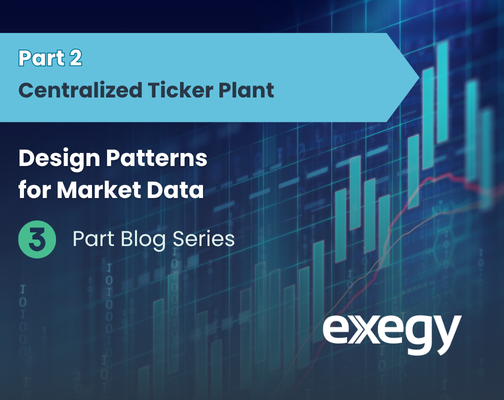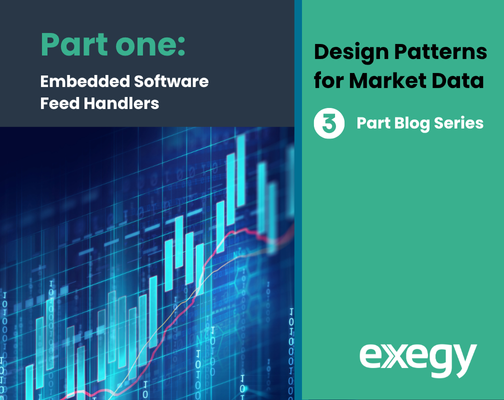Singapore Exchange Links Traders to Diverse APAC Products
Firms seeking greater access to Asia-Pacific equities and derivatives may consider the Singapore Exchange (SGX) for its diverse product set and extended trading hours. SGX’s innovative approach—developing strategic partnerships to simplify access to multiple Asian markets—provides new ways to enhance global strategies in APAC.
An Introduction to the Singapore Exchange
The 20-year-old Singapore Exchange calls itself “Asia’s most international exchange.” It’s built relationships with other Asian markets—in China, Southeast Asia, Japan, and India–while also establishing ties with major US exchanges. SGX’s goal is to serve as a one-stop shop in Asia for international investors to manage globalized portfolios with flexible market access that follows the sun.
That global focus is most evident in its trading hours, which are the longest in the region. SGX’s regular trading day runs from an 8:30 am pre-open to a 5:06-5:16 pm Singapore time (SST) trade-at-close period. By comparison, the Hong Kong Stock Exchange’s (HKEX) hours are 9:30 am-4:10 pm SST and the Japan Exchange Group’s (JPX) are 8 am-2 pm SST. SGX further extends hours for trading certain derivatives. Depending on the product, trading is open from 7:10 am to the following day at 5:15 am SST, creating overlap with markets in the Western Hemisphere.
SGX is Asia’s largest exchange for FX futures and options. However, it is still working to grow its market share in other asset classes. Relative to SGX, HKEX’s market capitalization is nearly eight times larger, and the Hong Kong exchange offers more than three times the equities listings. To attract traders, SGX has introduced unique indices and derivative products for global securities, commodities, and currencies.
The Singapore Exchange’s major growth is most visible in international index options and futures. While equities trading on the exchange decreased by 50% from 2014 to 2019 (from 687 to 344 billion shares), index derivatives volume nearly doubled, from 102 million contracts to 198 million.
Liquidity on SGX
Growth in SGX’s equities volume has been modest for a number of reasons. Traditionally, the exchange has drawn stable and conservative listing companies and investors, rather than breakout tech companies that might attract more activity and volatility. In addition, SGX is still recovering from the 2013 penny stock crash, which wiped out more than USD 5 billion in market value.
SGX continues to make changes to its market structure to boost liquidity. In 2014, it introduced a market maker and liquidity provider program that discounted fees to those groups. In addition to extended trading for derivatives, SGX added the 10-minute trade-at-close session in 2019. Primarily, the exchange seeks to stimulate trading through strategic partnerships with other markets and by offering new products.
Exchange Partnerships
SGX provides expedient, hassle-free entry to Asian markets for North American firms through its partnerships with US exchanges. One agreement with the CME Group allows a futures position opened in one marketplace to be liquidated in the other, creating a 24-hour marketplace between them and helping investors manage overnight risk. The arrangement is available for Eurodollar and Euroyen futures, as well as US dollar- and yen-denominated Nikkei 225 futures. SGX also has a collaborative-listings deal with the Nasdaq Stock Market to allow new firms to list on both exchanges simultaneously.
In its own hemisphere, the exchange has an arrangement with India’s National Stock Exchange (NSE) to list NSE derivatives, including popular NIFTY futures, on the Singapore Exchange. SGX has worked to enhance direct connectivity with HKEX, JPX, and the Australian Stock Exchange (ASX), simplifying access for global investors.
Derivative and Index Products
The Singapore Exchange’s differentiator is the suite of derivative and index products it’s created to give investors access to various asset classes, primarily within Asian markets. In doing so, it has collaborated with financial firms to provide multiple avenues for industries to manage their risks and for investors to leverage or speculate on that risk:
Indices and index derivatives:
- Nikkei 225 & MSCI Taiwan Futures. SGX has pioneered several Asian index futures products before the local exchanges offered their own contracts. SGX offers extended hours for Nikkei derivatives, until 5:15 am SST, to cover the close of the London markets.
- FTSE China A50 Index Futures. They’re the first (and currently only) USD-denominated futures contracts for China’s A-share market. These products made up 44% of SGX’s total derivatives trading volume in fiscal year 2019. The HKEX has announced plans to offer its own China A-shares index futures product.
- MSCI Net Total Return Futures. The exchange offers a suite of futures in partnership with MSCI based on the indices of regional and single-country markets.
- iEdge Indices and Inverse Indices. SGX and Factset developed this line of index and inverse products to appeal to passive investors. They are based on equities, derivatives, and fixed income, as well as country-based, industry-based, and custom indices.
- Smart Beta Indices. In 2020, SGX acquired Scientific Beta, a provider of “smart beta” indices, to complement their offerings.
Commodities:
- Ferrous Metals. Commodity derivatives are one of SGX’s fastest-growing product areas, centered around Asia’s most actively traded raw materials: Iron ore, coking coal, steel, rubber, and energy. SGX investors can trade the “virtual steel mill”—iron ore, coking and thermal coal, and freight derivatives—to manage industry risk or gain easier access to a fragmented ferrous market.
- Freight. Growing out of Singapore’s position as a major shipping hub, freight derivatives allow shippers to hedge against price volatility, while other market participants can leverage that volatility. In 2016, SGX acquired the London-based Baltic Exchange, whose derivative products are based on commodity shipping rates. SGX now offers freight futures contracts, option contracts, and forward agreement swaps.
FX:
- Major APAC Currencies. SGX offers a line of products across the major Asian currencies to support its leadership in the region. FX futures volume on the SGX has been growing—by nearly 50% from 2018 to 2019, to 20.8 million contracts and a notional value of USD 1.1 trillion.
- FlexC Custom Expiration Contracts. The exchange has launched FlexC Futures, which allow off-exchange trading of standardized futures and options, with expiration dates tailored to participants’ specifications.
- FX infrastructure incentives. SGX has offered creative and attractive incentives for global banks and other FX liquidity providers to co-locate with the exchange to enhance the city’s profile as an FX hub.
Getting Started Trading on the Exchange
To become a trading member of SGX and execute customer orders, a firm must be qualified by the Central Depository, the exchange’s clearing organization, and must have minimum base capital of S$1 million. Businesses without a physical presence in Singapore can apply for remote membership, as long as they meet all the regulatory requirements of their home jurisdiction.
Members who trade in securities must pay a one-time membership fee of S$25,000 (USD 17,700) and an annual fee of S$25,000. Traders of SGX’s derivatives pay membership fees of S$10,000 (USD 7,100) one-time and S$12,000 (USD 8,500) annually.
As for transaction costs, Singapore’s stamp duty—like Hong Kong’s stamp duty–exempts derivatives transactions; however, Singapore’s exemptions extend to all electronic stock transactions.
Market Data and Infrastructure Needs for SGX
Real-time market data for SGX is distributed via two feeds: The Securities Market Direct Feed (SMDF) and the Derivatives Market Direct Feed (DMDF). The cost of accessing these direct feeds varies based on depth of book and type of use.
Table 1. Monthly Market Data Fees for the SGX Securities and Derivatives Direct Feeds
| Securities Feed (SMDF) | Derivatives Feed (DMDF) | |||
| SD | USD | SD | USD | |
| Administrative fee | 100 | 71 | 100 | 71 |
| Direct connection fee (1st API connection) | 300 | 212 | 1,000 | 707 |
| Licensing fee | 6,000 | 4,245 | 3,000 | 2,123 |
| Per terminal fee | ||||
| Level 1 | 10 | 7 | 65 | 46 |
| Level 2 | 60 | 42 | 90 | 64 |
| Non-display | 500 | 354 | 5 | 3.54 |
For the lowest possible latency, co-location is available in SGX’s data center. Firms with speed-sensitive trading strategies that choose to co-locate should follow best practices for building low-latency market data infrastructure. This begins with selecting the right ticker plant technology to process and distribute real-time market data from the direct SGX feeds. Options range from software that runs on commodity servers to purpose-built appliances.
Firms who are already co-located with the HKEX, JPX, or ASX can access SGX direct feeds through those exchanges, which have established direct connectivity with the Singapore Exchange. The connections are not low-latency, so this option would be best for firms whose Singapore strategies are less latency-sensitive.
Less latency-sensitive firms also can access normalized SMDF and DMDF market data from a feed vendor with a point of presence (PoP) in Singapore. This approach allows for slower data speeds and less customization, but it can still provide depth of book and offers significant savings over maintaining the infrastructure to source the direct feeds.
Exegy has more than a decade of experience working in global markets, helping firms expand their trading strategies into new markets and asset classes. From purpose-built appliances with industry leading speed and features to normalized feeds with data-as-a-service convenience, Exegy has market data solutions to meet a wide spectrum of technical and business requirements. Our Hong Kong-based sales, service, and engineering staff are available to help you decide what choices are best for your firm’s needs. To talk to us about how Exegy’s solutions can help you gain access to Singapore’s markets, request a consultation.




